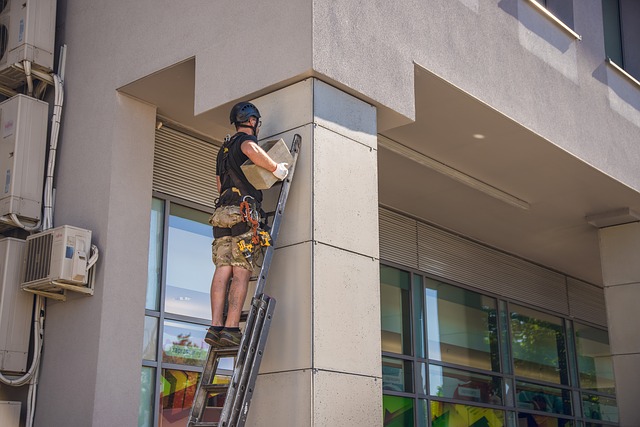
When working at height, it's absolutely vital that you have proper precautions in place to help prevent a slip or fall. Unfortunately, a lot of accidental deaths in the workplace are directly linked to working at height, so it's important to do what you can to prevent injury. We've put together this blog to show you how to work at height safely.
For more information you can check out the HSE Working at Height Resource, which we used to put together this blog!
What Is Working at Height?
If you are doing any task at a height where the fall could cause you harm, such as painting or reparing a roof, then you are working at height. Precautions have to be taken to prevent some of the dangers of working at hieght.
Working Safely at Height - First Steps
Before you even think about touching a ladder, you need to make sure that the work has been planned properly, will be supervised properly and is being carried out by someone with the correct training/experience and knowledge of working safely at height. You also need to check that you've got the right safety equipment. If you are working at height as part of a company, then your employer should have taken neccessary safety steps, but you should check that all practical measures have been taken before you begin your work. If you are working independantly, like on a DIY project, then you will need to take these steps yourself.
If the task is particularly dangerous or high up, you should consider whether a professional would be better suited to the job.
Assessing the risks When Working Safely at Height
We're experts on step ladder risk assessments - but risk assessments are cruicial for working safely at height no matter what type of ladder. Think about how long the task will take, how many times you'll need to do it, and the type of surface you'll be working on. Working safely at height is largely down to how well you understand and manage potential risks. For example, if you think that there's any chance of a slip or fall, make sure you explore fall arrest equipment before making a start. Even if you have completed this task many times before, check every time.
Prepare to Work Safely at Height
Preparing to work safely at height is incredibly important. Just because you have a ladder doesn't mean you are ready to climb it. Make sure that you are not alone when you start your project, so that somebody is available to help should the worst happen. Similarly, as with all instances where there is an opportunity for injury, make sure you have a way to phone for medical help in case you get hurt.
Most importantly, consider your own abilities carefully before you work at height. We all want to beleive that we could build a house with our own two hands if we had the chance...but unfortunately, that's not always the case. Working safely at height is difficult, so if you do not have the experience and skills to work safely, then you might want to avoid this particular project.
If you are going to undertake this project, make sure proper precautions are in place. These will vary depending on the height of your project, but you might require a harness or guardrails to work safely at height. Properly research what equipment might be neccessary.
Working safely at height - what you should and shouldn't do:
You should:
- Get as much work done from the ground as you can
- Make sure extra precautions are taken if you're working near a fragile/breakable surface
- Ensure that you're wearing protective headgear in case of falling objects
- Consider what would happen in the event of an emergency & make sure everyone around is aware of this
- Ensure the climbing space is clear & free of debris
You shouldn't:
- Lean over or overreach while using ladders or scaffolding
- Overload ladders - make sure you check the maximum working weight before you start!
- Use ladders for tasks that require you to work at height for longer than 30 minutes at a time
- Use a ladder or work at height if you aren't qualified or able to do so
Ladders for Working Safely at Height
Here at Ladders UK Direct, we offer a huge selection of ladders for domestic and trade use that will allow you to work at height safely. We work with well-known suppliers to bring you some of the safest & most-loved ladders on the market. Use the buttons below to shop our ladders & scaffold towers.
Ladders > Step Ladders > Scaffold Towers >
If you have any questions about working safely at height, you can contact the Ladders UK Direct team here - sales@laddersukdirect.co.uk.

 Ladders
Ladders  Step Ladders
Step Ladders  Loft Ladders
Loft Ladders  Scaffold Towers
Scaffold Towers 








